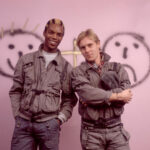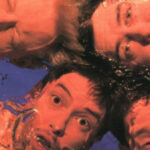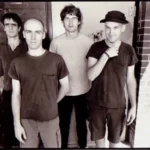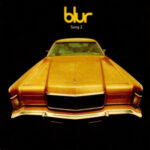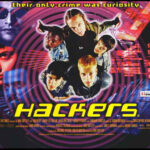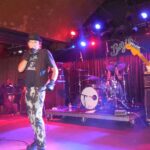In the vibrant and eclectic landscape of alternative music, few bands have displayed the audacious versatility and genre-blending prowess of Fishbone. Hailing from Los Angeles, California, Fishbone emerged in the late ’70s and solidified their place in musical history by fusing funk, rock, punk, ska, and reggae into a high-energy, boundary-defying sound. This article explores the rich and influential journey of Fishbone, delving into their musical evolution, their impact on the alternative scene, and the enduring legacy of a band that dared to defy categorization.
Fishbone’s roots can be traced back to 1979 when a group of high school friends with a shared love for music and a desire to break free from musical conventions formed the band. The original lineup included Angelo Moore (vocals, saxophone, theremin), Kendall Jones (guitar), Walter Kibby III (trumpet, vocals), Chris Dowd (keyboards, trombone), John Norwood Fisher (bass), and Philip “Fish” Fisher (drums).In the early years, Fishbone honed their skills by performing in local clubs around Los Angeles. Influenced by a diverse array of genres, including punk, ska, reggae, and funk, the band cultivated a unique and dynamic sound that defied easy classification. Fishbone quickly gained a reputation for their energetic live performances, characterized by frenetic stage antics, crowd interaction, and an infectious sense of fun.
Fishbone’s breakthrough came with the release of their self-titled EP in 1985. The EP featured tracks like “Party at Ground Zero” and “Ugly,” showcasing the band’s ability to seamlessly blend ska rhythms, punk energy, and funk grooves. Their energetic and eclectic sound garnered attention, and Fishbone soon found themselves at the forefront of the burgeoning alternative and ska-punk scenes.The band’s debut full-length album, “In Your Face,” followed in 1986, further solidifying their reputation for genre-defying music. Tracks like “When Problems Arise” and “A Selection” highlighted the band’s willingness to experiment with different styles, setting them apart from their contemporaries.
Fishbone’s dynamic and diverse approach to music continued to evolve with their subsequent albums. “Truth and Soul” (1988) showcased their affinity for soulful ballads alongside their signature ska-punk tracks. The album included a cover of Curtis Mayfield’s “Freddie’s Dead,” which demonstrated the band’s ability to reinterpret classic soul with a modern and energetic twist.
One of Fishbone’s defining features was their electrifying live performances. The band’s shows became legendary for their intensity, unpredictability, and the sheer joy that radiated from the stage. Angelo Moore, with his charismatic stage presence, wild costumes, and uninhibited energy, became the face of Fishbone’s live experience. The band’s ability to seamlessly transition between genres during their sets created an immersive and unpredictable sonic journey for audiences. Fishbone’s reputation as a must-see live act helped them build a dedicated fan base. They toured relentlessly, sharing stages with acts ranging from the Red Hot Chili Peppers to the Beastie Boys. The band’s versatility allowed them to connect with audiences across various musical communities, from punk rockers to ska enthusiasts. As Fishbone continued to experiment with their sound, their third album, “The Reality of My Surroundings” (1991), marked a creative peak. The album featured the hit single “Sunless Saturday,” which blended ska and funk elements with socially conscious lyrics. “Everyday Sunshine,” another standout track, showcased Fishbone’s ability to address serious social issues within their eclectic sonic palette. While Fishbone enjoyed critical acclaim and a dedicated fan base, mainstream commercial success remained elusive. The music industry struggled to categorize the band’s genre-blending approach, which made it challenging for them to fit neatly into the marketing strategies of the time. However, their refusal to conform to industry expectations also solidified their reputation as innovators and nonconformists. Despite their creative successes, Fishbone faced internal and external challenges that impacted the band’s trajectory. Infighting, disagreements, and the departure of key members led to lineup changes over the years. Guitarist Kendall Jones left the band, and subsequent changes in personnel altered the group’s dynamic. Fishbone’s fourth album, “Give a Monkey a Brain and He’ll Swear He’s the Center of the Universe” (1993), continued to showcase the band’s experimental approach but faced commercial challenges. The band went through a period of relative obscurity in the mid-’90s, navigating shifting musical trends and an evolving industry landscape. Fishbone’s later years saw a resurgence of interest in their pioneering sound. Despite facing obstacles, the band continued to release new music and tour. The 2006 documentary film “Everyday Sunshine: The Story of Fishbone” provided a comprehensive look at the band’s history, struggles, and enduring influence. In 2011, Fishbone was awarded a Lifetime Achievement Grammy, acknowledging their contribution to the music world. The recognition was a testament to the band’s enduring impact on alternative and punk music, as well as their influence on subsequent generations of musicians. Fishbone’s legacy extends beyond their discography. Their fearless approach to genre-blending and commitment to pushing musical boundaries laid the groundwork for future acts exploring the intersections of punk, ska, funk, and alternative rock. Bands like No Doubt, Sublime, and the Red Hot Chili Peppers have cited Fishbone as a key influence on their own musical journeys. Fishbone stands as a testament to the power of musical innovation and the enduring spirit of nonconformity. Their pioneering fusion of punk, ska, funk, and rock not only defied categorization but also inspired a generation of musicians to embrace eclecticism and experiment with diverse influences. Despite facing challenges and undergoing lineup changes, Fishbone’s impact on the alternative music scene remains indelible. Through their dynamic live performances, genre-blending albums, and unwavering commitment to artistic authenticity, Fishbone carved out a unique space in the landscape of alternative music. Their influence can be heard in the eclectic sounds of contemporary bands that continue to explore the boundaries of musical expression. Fishbone’s legacy is not just a collection of albums; it’s a testament to the enduring power of fearless creativity in the ever-evolving world of alternative music.This post has already been read 210 times!

